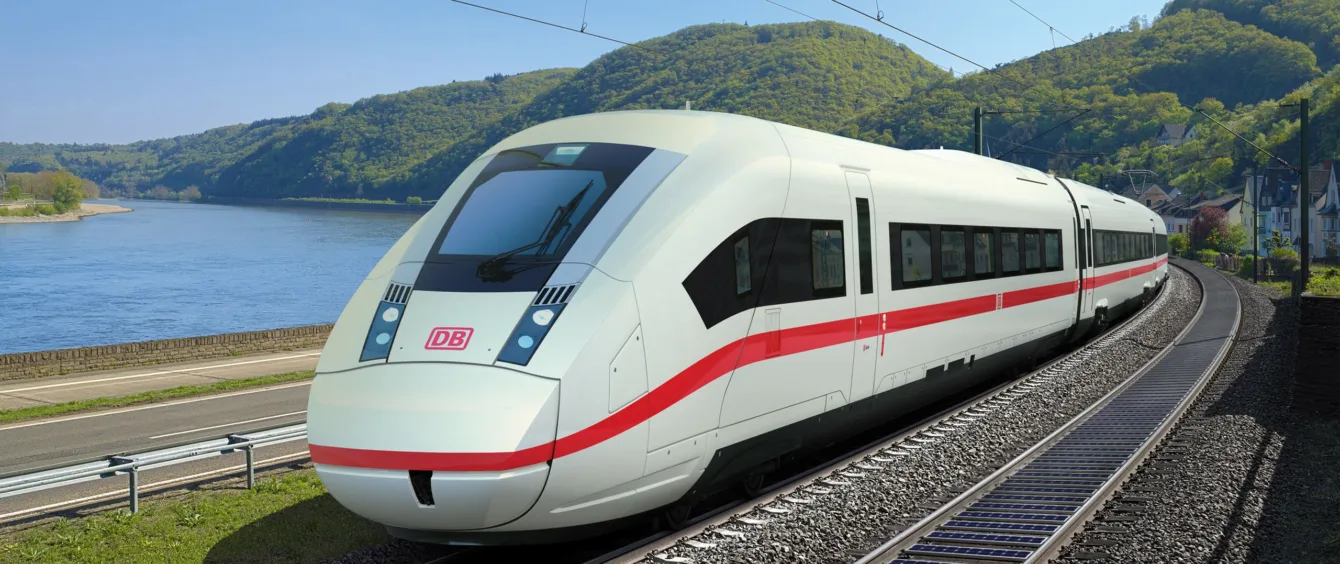Available real estate is a rare commodity – above all in densely populated areas in Central Europe. It is therefore all the better if it can be put to dual use. And this includes the space between railroad rails. Britain’s Bankset Energy is on a mission to make ample use of it to produce solar power.
Railway tracks – the perfect PV location?
The logic behind this concept is absolutely convincing. After all, railroad tracks are only partially sealed surfaces on which solar modules have no competition. This distinguishes railway PV above all from ground-mounted solar arrays, which are located on areas that could also be used for agricultural or recreational purposes. However, critics argue that solar modules can hinder track maintenance or may suffer damage due to servicing work, that reflected sunlight may be dangerous to train travel or that soiling of PV cells in such locations may be detrimental to efficiency.
Engineers claim to have covered all bases
Bankset Energy developers declare that they have thought of everything. The British company defines itself as a pioneer of the concept and proclaims to be the first and to date only company to produce solar power between train track rails.
A Bankset spokesperson told the en:former that ease of maintenance performed on the rails and ballast would not be greatly curtailed as the solar panels have the same size as the sleepers.
He conceded that shadowing of the modules by dust and snow may initially be more pronounced as dirt cannot be washed off horizontally mounted modules by rainwater as easily as off angled panels. But the company believes that active cleaning using special vehicles is much more cost efficient than the process used for most rooftop and ground-mounted systems.
British company already testing in Germany
Bankset claims that reflections do not pose a problem as the modules have a non-reflective coating. The spokesperson went on to say that the objective is not to fit solar modules to frequently used high-speed stretches: “Eighty percent of the German Railway’s network consists of secondary lines and track ends, which are used no more than once a day, and usually by trains travelling at low speeds.”
These are the sections on which the company has been testing its technology for a while now. “The Bankset Energy Group has been testing solar modules on sleepers in the German Railway’s testing area near the Ore Mountain Railway,” a spokesperson for the German Railway confirms. According to Bankset, so far the company has fitted solar modules to 200 kilometres of railway tracks in Germany, enough to feed some 20 megawatts (MW) of electricity into the German grid.
By comparison, the German Solar Association puts average ground-mounted PV system capacity (with over 0.75 MW in peak capacity) registered between 2019 and 2021 at 5 MWp.
Will the railway network become a megawatt solar farm?
According to the Pro-Rail Alliance, Germany currently has an active railway network with a total length of 38,600 kilometres. Bankset claims that it could equip roughly half of the network with solar modules in the short to medium term: “Our estimates have some 20,000 kilometres in Germany being suitable off the bat,” the company spokesperson said – enough for 2,000 MWp.
With a view to steadily increasing green electricity on the railroad network, the German Railway commissioned a 40-hectare PV system in Schleswig-Holstein at the end of April, which feeds up to 42 MW of electricity directly into the German Railway’s grid. The industrial group intends to be carbon-neutral by 2040.
Potential outside Germany
The technology should appeal above all to densely populated countries with large railway networks. Besides China, this includes India and many European nations. In total, EU member states have a railroad network of over 230,000 kilometres.
Switzerland’s railway network is even more tightly spun, featuring an aggregate length of over 5,000 kilometres. Moreover, the country recently issued an edict mandating solar power production on public property. However, whether railroad sleepers are categorised as “suitable infrastructure surfaces” within the meaning of the law remains to be clarified.
Using railway infrastructure to generate solar power is also the subject of a feasibility study that is being carried out by the Rhineland Technical Inspection Authority on commission from the German Centre for Rail Traffic Research. The study explores “travel route-integrated PV modules in track ballast” as well as solar modules installed adjacent to or in noise-abatement walls. Results are scheduled to be published in the second half of 2023.
